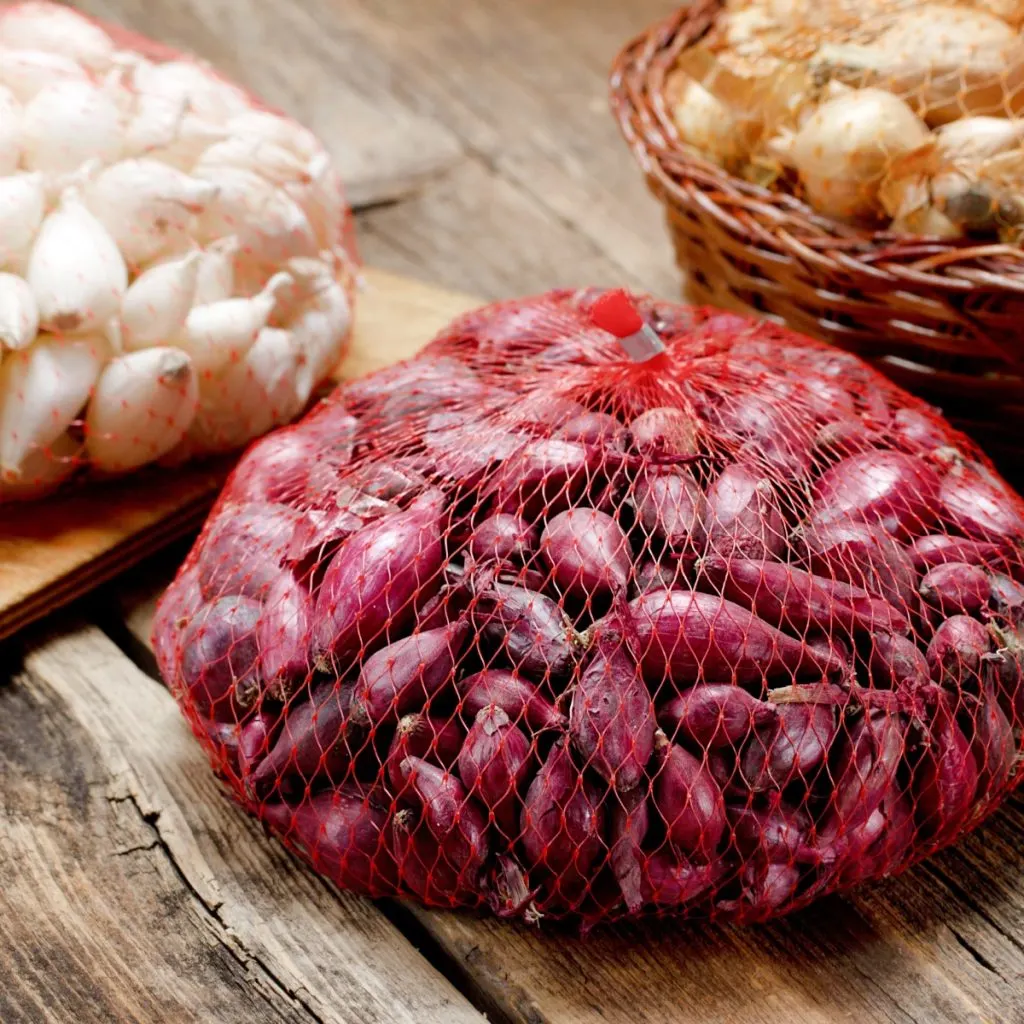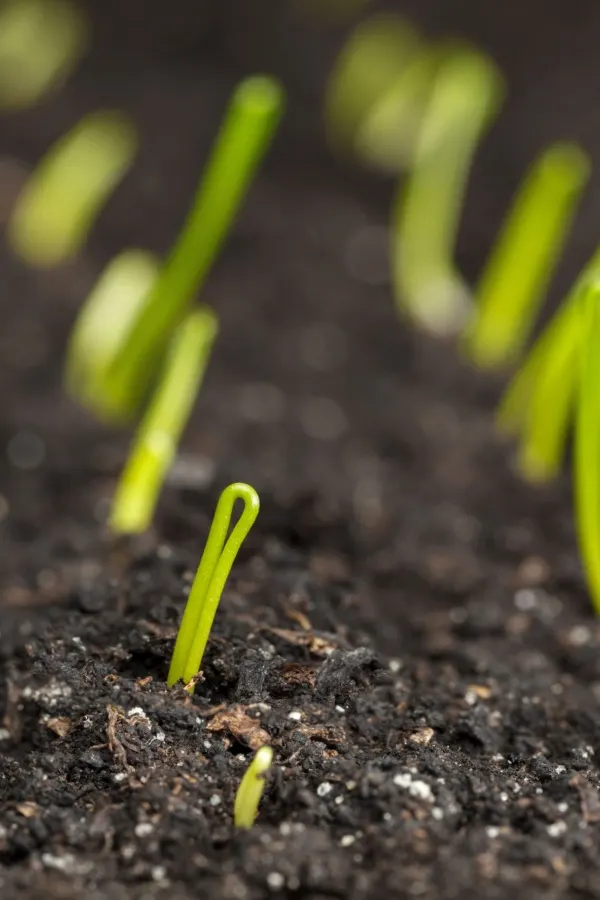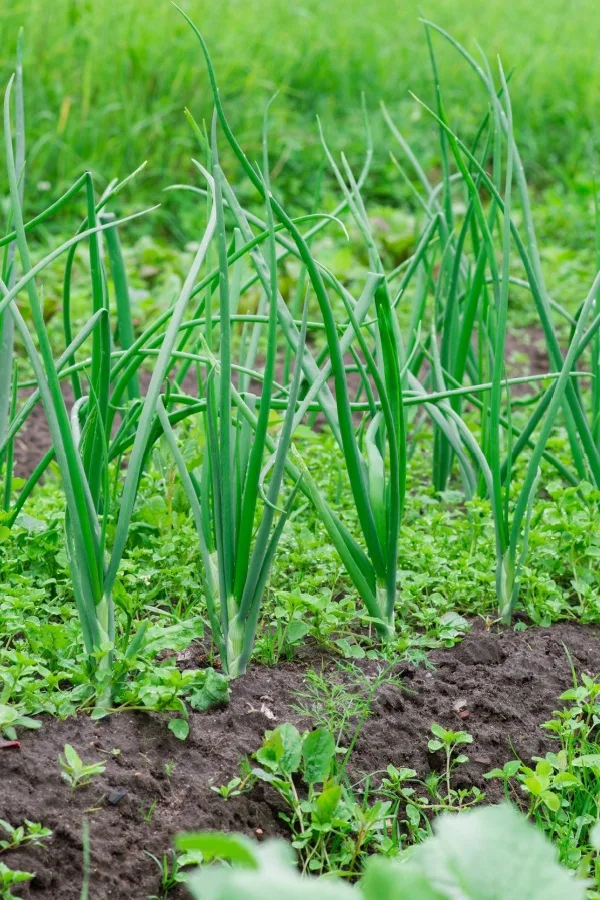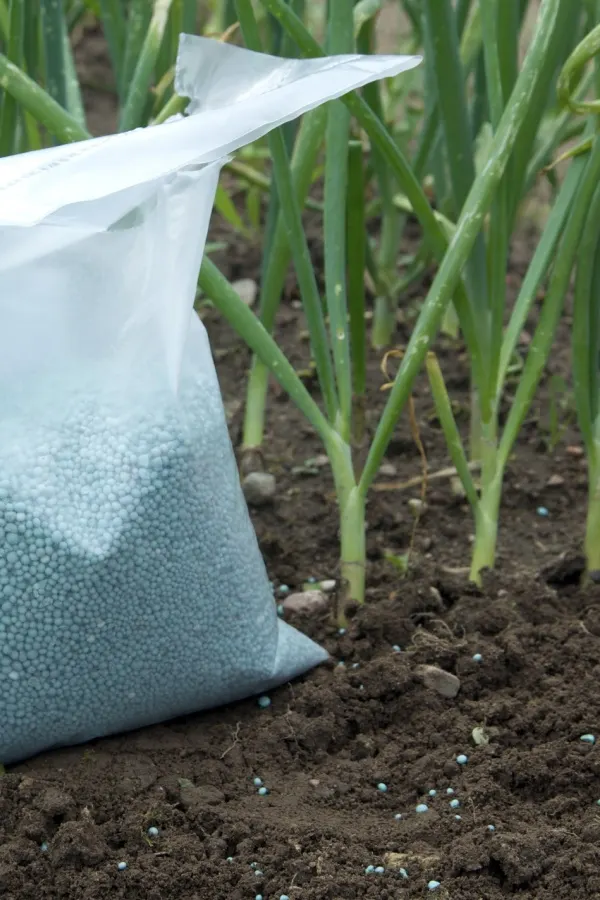Looking to plant onion sets this spring for a big harvest of delicious, full-size home grown onions this summer and fall?
Onions are a great crop for backyard gardeners and can fit in almost any available space. Since they don’t produce large root structures, they are easy to grow in traditional gardens, raised beds – or even in pots and containers.
But there is one thing that challenges many gardeners when growing onions – and that’s getting them to fully develop in size before it’s time to harvest. Let’s face it, there is nothing more frustrating than watching your onions grow well all summer – only to harvest small or under-developed bulbs in late summer or early fall.

Not only do smaller bulbs leave you with less of a harvest, they also have far less flavor. Even worse, immature bulbs don’t store well and need to be used up relatively quickly after harvesting. Thankfully, it’s actually quite easy to solve this common problem – all by following 5 simple onion growing secrets!
5 Secrets To Planting And Growing Onion Sets
#1 Plant Onion Sets – Not Seeds Or Transplants
When planting in the spring for large onions – it’s always best to plant onion sets. There are actually three different ways to plant onions, with the first method being planting from seed. Onion seeds take a long time to grow and develop. Sometimes as long as 6 months or more.
Unfortunately, by the time seed planted onions are ready for harvesting as a larger onion, they’ve most likely been hit by a frost or freeze in most locations. You can still enjoy onions from seed – but you will need to harvest them as smaller, green onions instead of large onions.
The second option for planting is to use small onion seedlings or transplants. Onion transplants run into the same issue as seeds as they take a long time to grow to produce full-sized onions. In addition, working with tiny transplants can be finicky and difficult, resulting in plants that struggle to become established.

A disadvantage of growing both onion seeds or transplants is that it can be difficult to differentiate them from weeds once planted or germinated in your garden space. It’s also easy to disturb an establishing onion seedling while pulling up those weeds.
Why Onions Sets Are The Answer For Spring Planting
For all of those reasons above, there is only one method that works best for producing full-sized onions with spring planting – and that is to use onion sets! Onion sets are essentially small immature onions that were started by seeds and then harvested early to grow as sets.
When onion sets are planted back into the soil, they have a better time adjusting and becoming established. In addition, they mature much quicker than transplants or seeds. Some onion sets can even be harvested in as early as 60 to 80 days!
- Product Affiliate Link: Mixed Red, White and Yellow Onion Sets 8 oz | Non-GMO Bulb
- Product Affiliate Link: Onion Sets, Super Sweet Onions, 12 Ounce Pack
#2 Use Compost When Planting – How To Plant Onion Sets In The Spring
One of the most important things you can do at planting time is to use compost in the planting hole or trench. The additional compost helps to power the young onions and allows them to establish quicker than soil alone. It also helps to keep valuable moisture in the soil as well.
Onion sets can be planted as soon as you can work the ground in the early spring. This is typically around March or April for most locations. Whether you grow white, yellow, or red onions, the care and maintenance are exactly the same. Choose sets that are around ¾ of an inch in diameter as opposed to larger bulbs to reduce the chance of the onions bolting early.

Select a location that has loose, well-draining soil. Onions struggle to grow to full size if the soil is heavy or dense. If you do have clay like soil, add plenty of compost into the soil as well as sand. Do this before you plant to loosen the surrounding soil.
To plant with compost, start by creating a long trench two inches deep. Fill the trench about 2/3rds full of compost. Next, place the sets directly down into the compost layer so that the pointy end of the onion is about 1 inch below the soil line. Simply cover with soil and lightly water in.
As for spacing, if you want to harvest young spring onions, place the bulbs about 1 inch apart. For mature onion bulbs, space 3 to 4 inches apart. This will give the bulbs plenty of space to grow to full size.
#3 Mulch Immediately – How To Plant Onion Sets In The Spring
It is extremely important to mulch the soil as soon as you plant your onions. Many gardeners wait until the bulbs start to germinate, but this can cause a few big issues.
Adding mulch immediately has two main benefits. First, it helps to retain the moisture within the soil. The onions need moisture in order to germinate and establish in the soil. Bare soil can dry out fast, making it hard for onions to get the moisture they need to get growing.

But even more importantly, a thin layer of mulch helps keep competing weeds from growing and overtaking the onions. While onions from sets are easier to distinguish from tiny weed seedlings, it can still be difficult to try to pull up weeds without disturbing establishing onions.
One note of caution, don’t go overboard with the mulch at first. A thin layer about 1 to 1.5 inches of straw is plenty to help the bulbs until they sprout through the surface. Once you see all of the onions growing, add an additional 3 to 4 inches of mulch.
#4 Fertilize With The Right Fertilizer – How To Plant Onion Sets In The Spring
Adding compost at the time of planting does help to give onions an initial boost of nutrients. However, even though they aren’t heavy feeders, onions can benefit from an additional application of fertilizer as well – as long as it’s the right type!
After about 3 weeks, begin applying a nitrogen-heavy fertilizer to encourage foliage growth. A ratio of 21-0-0 is best for onions. Granular fertilizers tend to work better than liquid fertilizers for onion sets. (Product Link: Ammonium Sulfate Fertilizer)
Sprinkle the fertilizer around the sides of the plant and work it into the soil. Water the soil well after each fertilizer application. Apply the granules every 2 to 3 weeks for a total of 3 applications. After that, there is no need to add additional power.

#5 Remove Any Flowers – How To Plant Onion Sets In The Spring
Onions have a tendency to bolt during fluctuating weather conditions or inconsistent watering. If the plant becomes stressed, it will send up a flower stalk and go to seed before the plant is mature.
The issue with bolting is that as soon as the onion starts to put its energy and resources into growing seeds, it will stop growing the bulb. This can result in stunted or overly small onion bulbs that do not store well.
To help prevent this from occurring, cover onions when cold snaps occur. Providing plants with afternoon shade during extremely hot spells can help too. Also, be sure to be consistent with watering. If you do see a flower head starting to form, cut it off immediately to help the plant continue to grow.
Bolted onions are still edible, even if they are on the smaller side. So if you have an onion that has started to bolt, the best thing to do is to dig it up and use it immediately. For more on growing onions, check out our article: The Secret To Growing Red Onions – And Why Early Spring Is The Time To Plant!
Here’s to growing your biggest and best crop of onions ever this year!
Simple Garden Life
Follow Our Facebook Page For Even More Great Tips! Simple Garden Life Facebook Page
Simple Garden Life is a website dedicated to keeping gardening fun, simple and enjoyable! We publish two new articles each week along with a new garden podcast episode every two weeks. This article may contain affiliate links.
